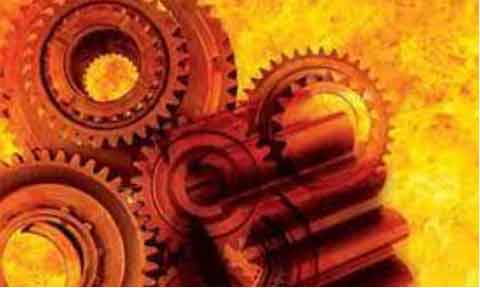Cracks and fractures in heat treatment can significantly impact the quality and performance of heat-treated components. Understanding the causes, types, and mechanisms of cracking is crucial for effectively addressing this common issue. This article delves into the world of cracks and fractures in heat treatment, providing insights into their causes and strategies for prevention.

- Thermal Stresses:
- Cause: Thermal stresses occur due to temperature differentials during heating and cooling. When the material undergoes rapid or uneven temperature changes, high thermal gradients are created, leading to internal stress buildup.
- Types of Cracks: Thermal stresses can result in various types of cracks, such as quench cracks, transformation cracks, and residual stress-related cracks.
- Prevention: Minimize thermal gradients by controlling heating and cooling rates, utilizing appropriate quenching media, and implementing stress-relieving processes. Ensure proper fixturing and part design to reduce stress concentrations.
- Residual Stresses:
- Cause: Residual stresses are internal stresses that remain in the material after heat treatment. They can occur due to uneven cooling rates, phase transformations, and differences in material properties.
- Types of Cracks: Residual stresses can lead to cracking, including stress corrosion cracking, intergranular cracking, and transgranular cracking.
- Prevention: Implement stress-relieving techniques such as tempering or annealing to alleviate residual stresses. Optimize heat treatment parameters to minimize the introduction of residual stresses.
- Material Defects:
- Cause: Material defects, such as inclusions, segregations, or non-uniform microstructure, can act as stress concentration points during heat treatment.
- Types of Cracks: Material defects can initiate cracks, including inclusion-induced cracks, segregation-related cracks, and cracks associated with microstructural heterogeneity.
- Prevention: Employ strict quality control measures to identify and remove material defects before heat treatment. Ensure proper material selection and homogenization processes.
- Quenching Issues:
- Cause: Improper quenching techniques or media selection can result in rapid and non-uniform cooling, leading to thermal shocks and stress concentrations.
- Types of Cracks: Quenching issues can lead to quench cracks, distortion-related cracks, and cracks associated with martensite formation.
- Prevention: Optimize quenching parameters, including cooling rates, quenching media, and agitation methods, to achieve uniform and controlled cooling. Consider preheating or interrupted quenching techniques to minimize thermal shocks.
- Overheating and Over-Tempering:
- Cause: Excessive heating or prolonged exposure to high temperatures can lead to grain growth, coarsening of carbides, and loss of material strength.
- Types of Cracks: Overheating and over-tempering can result in heat-affected zone (HAZ) cracks, grain boundary cracks, or tempered martensite embrittlement.
- Prevention: Follow proper heat treatment procedures, including accurate temperature control and precise timing. Employ appropriate cooling methods to prevent over-heating or over-tempering.
- Brittle Phase Formation:
- Cause: Certain alloy systems are prone to the formation of brittle phases during heat treatment, which can reduce ductility and lead to cracking.
- Types of Cracks: Brittle phase formation can result in cracks associated with eutectic or intermetallic phases.
- Prevention: Understand the alloy system and its susceptibility to brittle phase formation. Adjust heat treatment parameters, including temperature and cooling rates, to minimize the formation of brittle phases.
Cracks and fractures in heat treatment can significantly impact the quality and integrity of heat-treated components. By understanding the causes and types of cracking, manufacturers can implement appropriate preventive measures to minimize their occurrence. Optimizing heat treatment parameters, controlling thermal gradients, reducing stress concentrations, and employing proper quenching techniques are essential for crack prevention. Continuous monitoring, process improvement, and adherence to industry standards contribute to successful heat treatment outcomes with minimal cracking issues.
